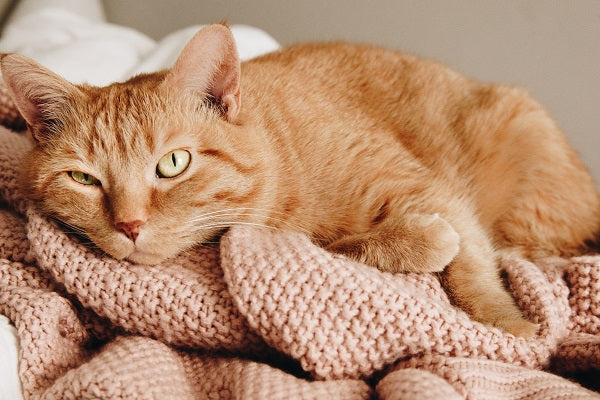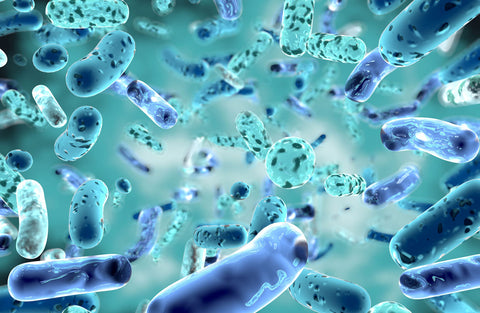
Hypothyroidism in cats is a rare, complex glandular disorder caused by an under-active thyroid gland. Fortunately, this serious condition is usually not deadly and can be successfully treated if recognized in a timely manner. This article will provide you with a comprehensive overview of everything you need to know about hypothyroidism symptoms, problems & treatment.
Cat hypothyroidism background information
Hypothyroidism is a disorder of the endocrine system caused by an under-active thyroid gland. The thyroid gland is a large endocrine gland (endocrine glands secrete hormones directly into the blood), located in the neck of the cat just below the larynx (Figure 1).
Adjacent to the thyroid are also small parathyroid glands. It is important to remember that even though thyroid and parathyroid glands are anatomically close structures, these are functionally very different glands. The feline thyroid is divided into two lobes, each about 1 cm long, 3-5 mm wide and 1-2 mm thick. The two lobes in the feline thyroid are not connected, as seen in humans.

Feline thyroid gland
The thyroid gland produces a number of hormones, including triiodothyronine (T3) and thyroxine (T4). These two hormones play important roles in the regulation of the cat’s metabolism. There are two potential thyroid disorders that may occur: hyperthyroidism and hypothyroidism. Hyperthyroidism transpires when the levels of the produced thyroid hormones are too high, as opposed to hypothyroidism caused by an under-active gland.
Hypothyroidism is a common condition among humans and dogs, but it rarely ever spontaneously occurs in cats. Most of the time, this condition in cats is a result of over-treatment of hyperthyroidism, a disease that occurs more frequently. This type of feline hypothyroidism is termed as iatrogenic hypothyroidism. Other two potential types are spontaneous and congenital feline hypothyroidism.
Iatrogenic hypothyroidism
Hyperthyroidism is usually treated in one of the four ways: a) surgery to remove the thyroid glands completely, b) lifelong treatment with methimazole (reducing the thyroid function), c) treatment with I-131 injection that destroys the gland and c) a low iodine diet (iodine is required for normal thyroid function). While most cats commonly respond very well to these treatments in the first few months, the thyroid hormone levels will drop below the normal range. Sometimes this results in iatrogenic hypothyroidism.
Spontaneous hypothyroidism
Spontaneous hypothyroidism occurs when the function of the gland decreases without any other causes. It is also sometimes referred to as primary hypothyroidism which is a rare case among cats with only a few cases documented.
Congenital hypothyroidism
This type of hypothyroidism occurs when a kitten is born with a defect in the gland that limits its activity. A missense point mutation in the TPO gene has been identified as a cause of genetically determined hypothyroidism. This gene is inherited by autosomal recessive mode and it is segregated within the family with congenital hypothyroidism. However, unrelated affected domestic shorthair cats weren’t found to have the same TPO mutation which seems to be low in the population. This could also be due to likely underreported cases of CH in cats (Karthik et al, 2013).
The mutation is inherited in an autosomal recessive mode, meaning that a cat must inherit two mutated copies of the gene (alleles), one from each of the parent, in order to be affected by the disorder. Cats who carry only one mutated allele and one healthy allele remain silent carriers (they can pass on the trait to the offspring but aren’t affected themselves). If two silent carriers cross, there is a 25% chance for each kitten to be affected. Two affected cats give only affected offspring.

Cat hypothyroidism sYMPTOMS & dIAGNOSIS
Most noticeably, felines affected by hypothyroidism significantly gain weight and have increased appetite and water intake. Their coat may become dry, dull and unkempt or persistently flaky. They will keep lower body temperature than normal and may be lethargic, weak and noticeably less playful. Other potential signs include: inactivity, mental dullness, weakness, loss of fur, constipation, elevated kidney values and delayed teeth eruption.
Hypothyroidism in cats can be a very complex disorder to correctly diagnose. Because most of the time the condition is iatrogenic, veterinarians need the complete medical history of the cat as well as the documentation of all potential hypothyroid symptoms. They will often conduct a physical examination first and follow it up with routine laboratory testing to confirm the diagnosis. The tests usually include a complete blood count, urinalysis, biochemistry profile and endocrine testing (Peterson, 2013).

TREATMENT & PROGNOSIS
Fortunately, the prognosis of feline iatrogenic hypothyroidism is good. Iatrogenic hypothyroidism treatment is normally successful with noninvasive treatment by simple reduction of hyperthyroidism medication or by supplementing thyroid hormones. Since the spontaneous and congenital cases are extremely rare, the prognosis for them is still unclear. The most common medication used to supplement for the low inactivity of the thyroid is L-levothyroxine and is applied orally, usually for life.

Feline hypothyroidism, although a rare and treatable condition, has to be taken seriously. It is crucial to recognize the symptoms as early as possible and address them correctly. Veterinarians will prescribe professional care, but attentive home care is usually needed as well. With adequate care, lots of love and attention, we can offer our felines best lives they could ever wish for.
References:
1. Karthik Raj; Catherine V. Morrow; Anne Traas; Angela M. Erat; Marisa Van Hoeven; Hamutal Mazrier; Mark E. Haskins; Urs Giger (2013). Congenital Hypothyroidism with Goiter in Cats Due to a TPO Mutation. Tufts’ Canine and Feline Breeding and Genetics Conference, Section of Medical Genetics, School of Veterinary Medicine, University of Pennsylvania, Philadelphia, PA, USA
2. Peterson, Mark (2013). Diagnostic Testing for Feline Thyroid Disease: Hypothyroidism. Compendium: Continuing Education for Veterinarians. Vetlearn.com.



